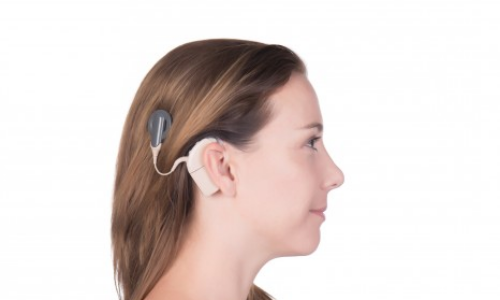

Hearing is one of the most important senses in our body which is mandatory for good speech and language. A complete or partial loss of hearing either gradually or all of a sudden creates a major impact in a person’s quality of life, disrupting the essential needs for communication. Hearing loss in children can cause problems in their school interactions like making friends, joining in group activities, increased effort in learning and hence academic performance.
It also hinders the complete development of their social skills. In adults, apart from the stigma associated with impaired hearing, it also plays an important role in the quality of interactions with family members and causes difficulties in the workplace. Hearing loss has been documented to be an important factor leading to social isolation, loneliness and loss of independence especially among the elderly. It also has been cited as a factor leading to dementia in this group.
A cochlear implant has proven life changing as it restores this sense of hearing. It restores the ability to hear without needing visual cues like lip reading. It reduces the listening effort in noisy situations and more importantly deals with the ringing sensation in ears in most cases. Who are chosen?? Hearing impairment is evaluated initially with an examination, audiometric tests and scans by a clinician to look for any correctable causes and those not amenable are advised hearing aids which are sound amplifying devices. People who aren’t benefitted adequately with these aids or who are not candidates for the same are advised a cochlear implant either to one or both sides to bypass the parts of ear which are nonfunctional.
Components of a cochlear implant A cochlear implant consists of two parts – an external device which fits behind the ear and captures sound signals. Sound is converted into electrical signals by the processor and sent to the second part, the internal device, which is fixed under the skin by a surgical procedure. Electrical information sent through the nerve is then relayed to the brain for processing. Surgery and rehabilitation The surgical procedure consists of placing an incision behind the pinna and drilling the bone underneath to access the middle ear through which the implant is placed gently to occupy the inner ear turns. After wound healing, the device is switched on and the candidates are subjected to a dedicated period of auditory training sessions which can range from 3 months to more than a year to help them use the device according to their specific needs.
Safety and durability Apart from the standard surgical risks and chances of local infection, there is a very rare risk of infection to the fluid around the brain for which adequate preventive measures are taken prior to the surgical procedure. Feasibility of an MRI post procedure depends on the model of implant chosen. An implant is manufactured to last a lifetime but less than 5 percent chance of device failures have been documented. Over the years, cochlear implants have been used and designed for various situations like in hearing loss of single side, hearing loss affecting only higher frequencies. The technological advancements are looking forward to fine tune the current achievements in this field of hearing rehabilitation.